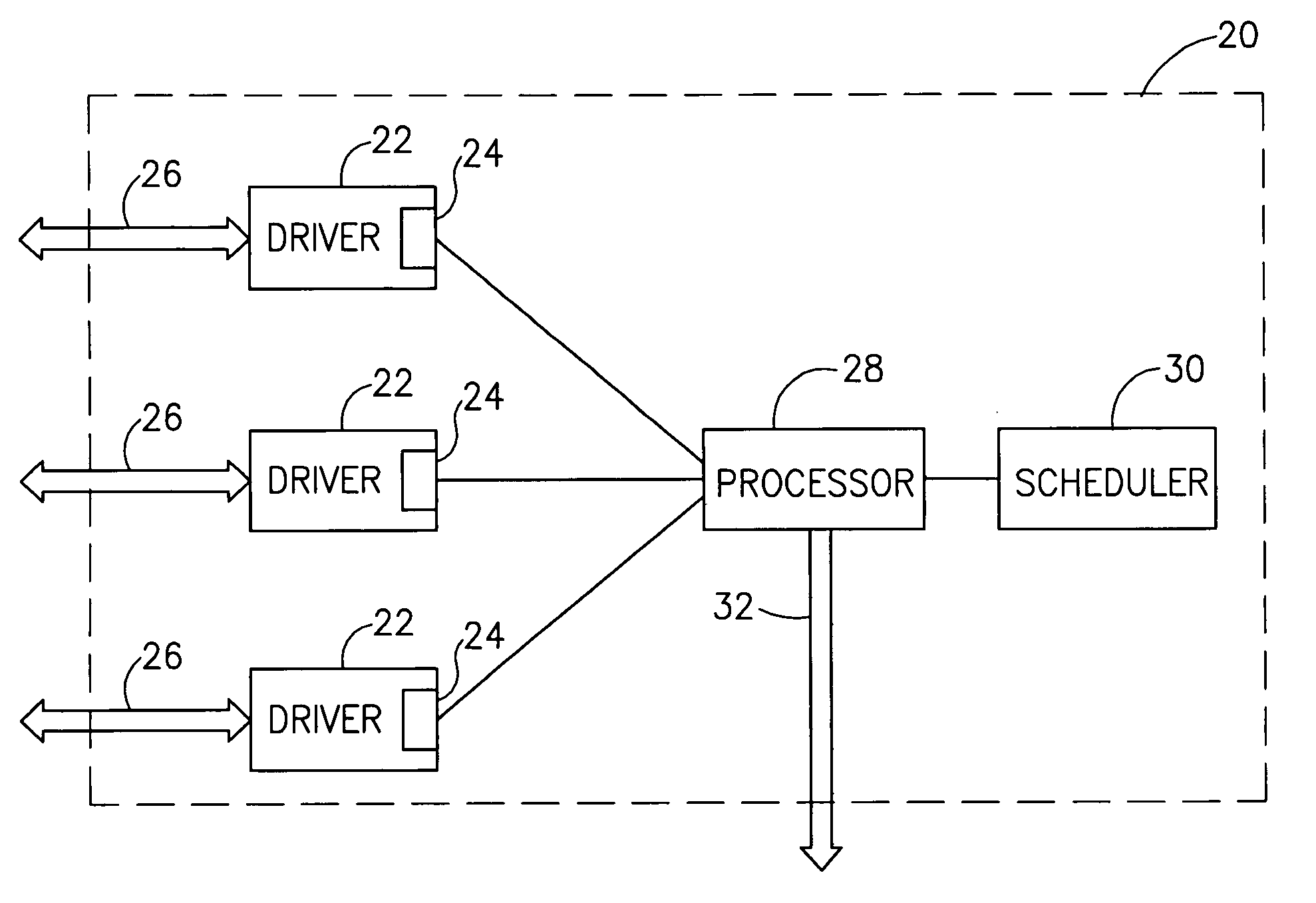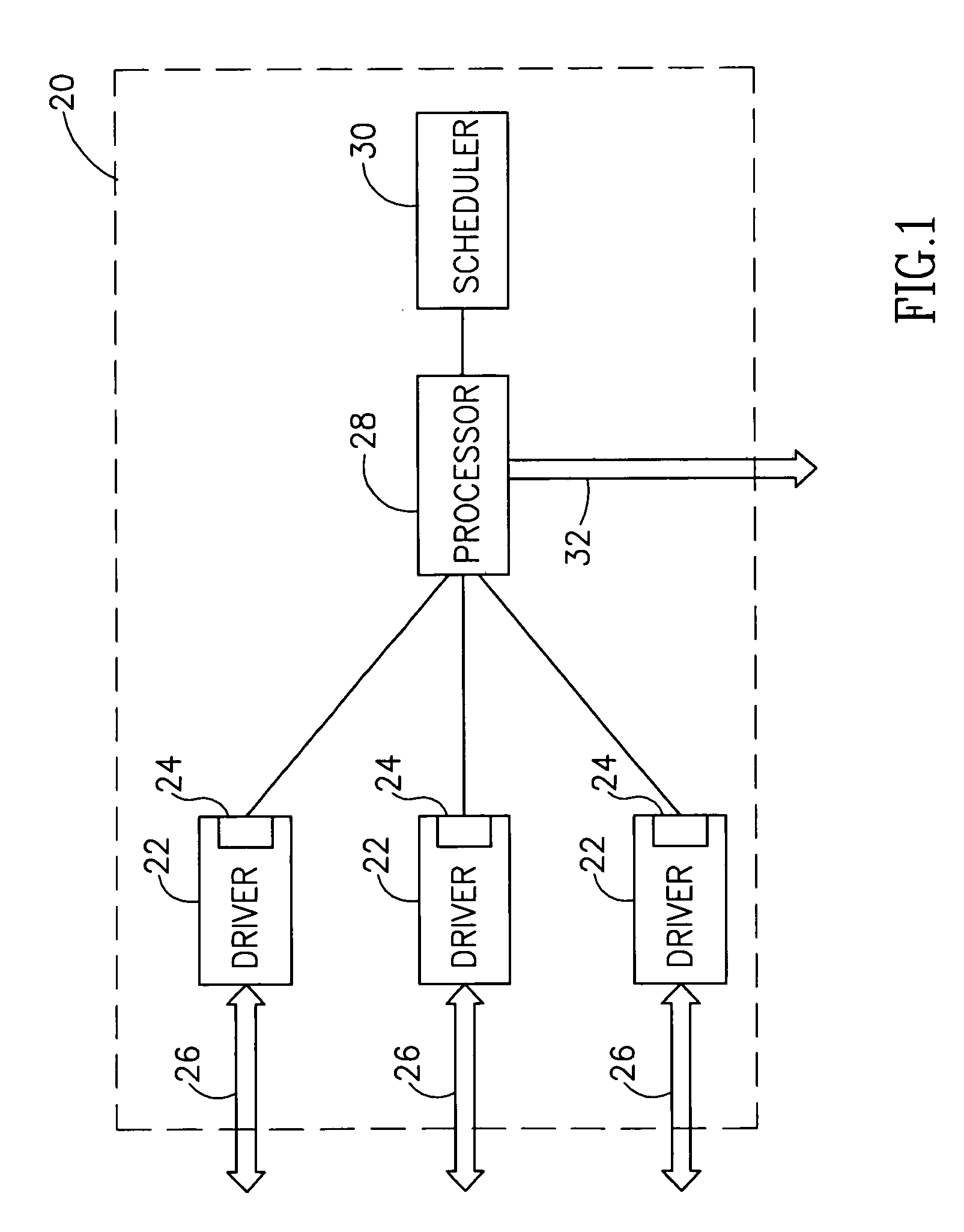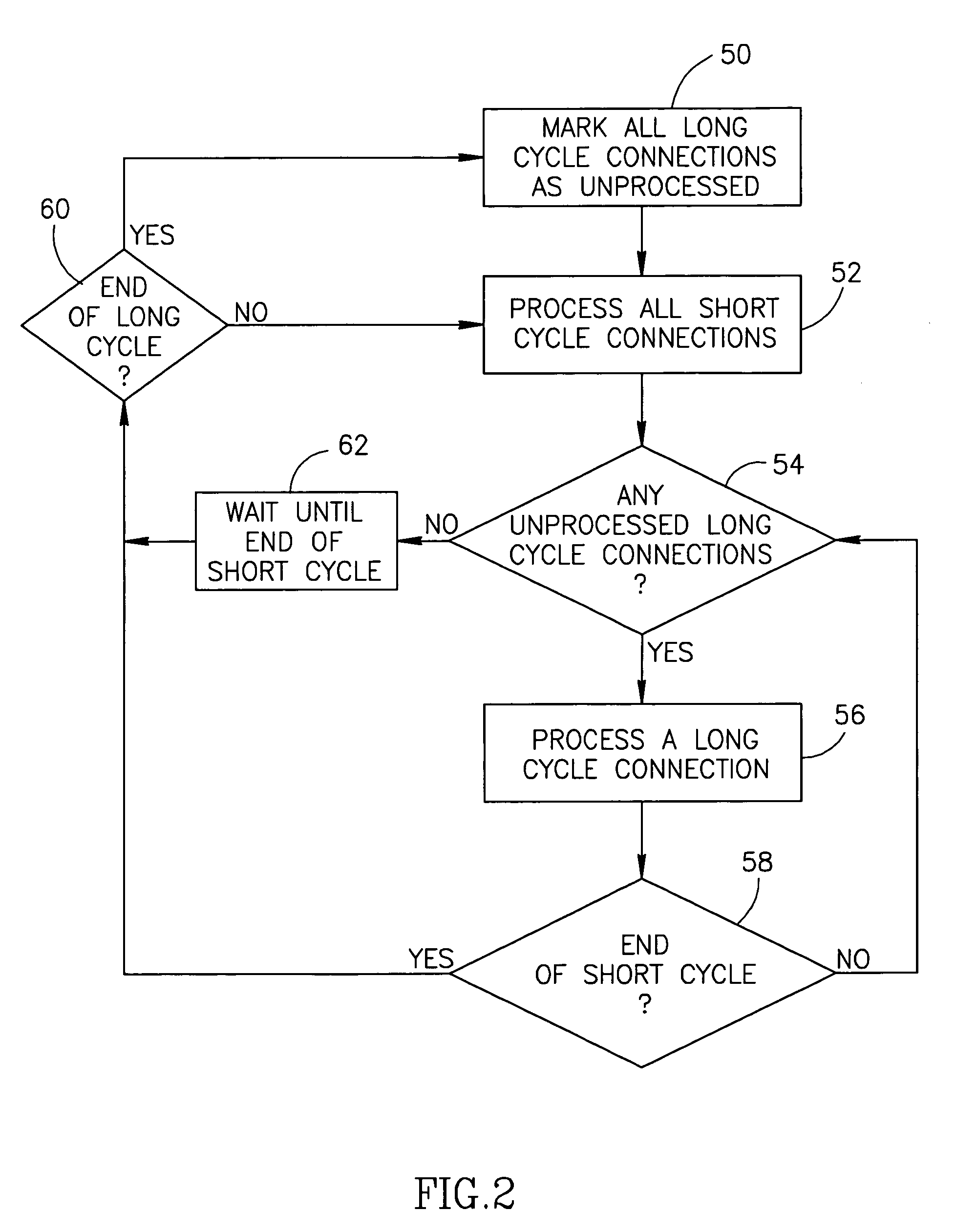Scheduling in a remote-access server
a remote-access server and scheduling technology, applied in the field of communication systems, can solve the problems of affecting the scheduling of the processor to handle data from connections with different cycles, affecting the service life of the server,
- Summary
- Abstract
- Description
- Claims
- Application Information
AI Technical Summary
Benefits of technology
Problems solved by technology
Method used
Image
Examples
Embodiment Construction
[0038]FIG. 1 is a schematic illustration of a connection handling server 20, in accordance with a preferred embodiment of the present invention. Server 20 comprises a plurality of drivers 22, preferably run on processor 28, which accumulate raw data from incoming connections passing on channels 26. Server 20 may be employed as a stand alone server or may be used as part of an array of servers, of the same or different types. The array of servers is preferably used with a channel router, of any type known in the art, for example, the router described in Israel patent application 132,888, filed Nov. 11, 1999, which is assigned to the assignee of the present application, and the disclosure of which is incorporated herein by reference. Preferably, the raw data is accumulated in respective buffers 24 of drivers 22. Server 20 includes a processor 28 which processes the received data from each of the connections. The processing decodes (and / or performs other processing on) the incoming raw...
PUM
 Login to View More
Login to View More Abstract
Description
Claims
Application Information
 Login to View More
Login to View More - R&D
- Intellectual Property
- Life Sciences
- Materials
- Tech Scout
- Unparalleled Data Quality
- Higher Quality Content
- 60% Fewer Hallucinations
Browse by: Latest US Patents, China's latest patents, Technical Efficacy Thesaurus, Application Domain, Technology Topic, Popular Technical Reports.
© 2025 PatSnap. All rights reserved.Legal|Privacy policy|Modern Slavery Act Transparency Statement|Sitemap|About US| Contact US: help@patsnap.com



